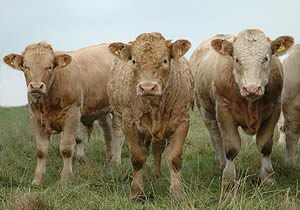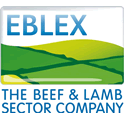| 19/08/06
English suckled calf and store cattle finishers thinking about buying
stock in the coming year should take the time to work out their break-even
budgets advises the English Beef & Lamb Executive (EBLEX).
Good forward planning based on actual resource availability
(including shed space), realistic budgets and careful cash flow
assessments ahead of purchasing are vital. Especially so given
the Single Payment Scheme (SPS) experiences of the past year, noticeably
higher cereal prices, and home-grown feed supplies limited by the
long, hot summer in many cases.
To help deliver a profit, stock should be purchased only after
break-even budgeting to establish the extent to which the market
returns necessary to cover their likely finishing costs can realistically
be expected on the basis of experience and market forecasts.
Example Break-even Budget for 2006/07 Suckled Steer Finishing
Suckled calf cost (300
kg @ 120p/kg) |
£360/head |
Time on farm (to gain 300 kg
@ 1.2 kg/day) |
250
days |
Feed cost (250 days @ 80p/day) |
£200/head |
Bedding, veterinary & other
variable costs |
£60/head |
Fixed costs @50p/day |
£125/head |
Total costs |
£745/head |
Carcase weight at sale (600
kg @ 55% killing out) |
330 kg |
Required sale price to cover
costs liveweight
deadweight |
124 p/kg
226 p/kg |
The value of spreading the finishing period by buying different types and weights
of stock should not be under-estimated either, both in maintaining income flow
and in minimising the risk from short-term market fluctuations.
For the greatest value in purchased cattle finishing this season, EBLEX advises
producers to:
• Buy stock suitable for specific markets as well as individual
farm circumstances;
• Purchase animals from as few sources as possible for health
and biosecurity;
• Group and house cattle according to age, sex and target slaughter
date;
• Assess feed value for money in cost per unit of energy rather
than per tonne;
• Minimise costs per unit of liveweight gain by achieving high
growth rates;
• Plan to finish most continental-cross animals at two years of
age or less;
• Weigh stock regularly to monitor performance against pre-set
targets;
• Manage heifers, in particular, to grow frame before offering
a finishing diet; and
• Always be aware of how sensitive your profitability is to cost and price fluctuations.
 The Stabiliser: the modern functional suckler cow The Stabiliser: the modern functional suckler cow
 Northwest
Stabiliser Project - interest gaining momentum Northwest
Stabiliser Project - interest gaining momentum
 Beef from the Dairy Herd at Dairy Event 2006 Beef from the Dairy Herd at Dairy Event 2006 |



